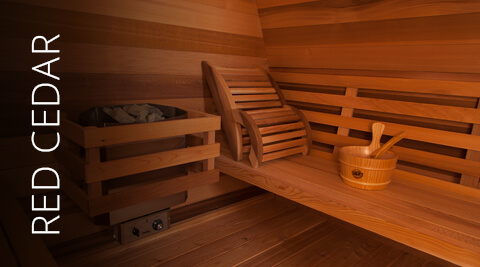The Only Guide for Traditional Sauna
Table of ContentsTraditional Sauna - QuestionsNot known Details About Traditional Sauna Traditional Sauna Fundamentals ExplainedThe Main Principles Of Traditional Sauna
Many of the weight lost in a sauna is water loss and is re-gained upon rehydrating. Without a question sauna can be an important component of a healthy and balanced weight loss program. To take a look at the distinctions in between standard and IR saunas, I will divide these into proven, academic, and produced distinctions.Therefore, the most popular point in the saunawhich is at the ceiling straight above the sauna heateris normally in between 185 and 190 F. Traditional Sauna. Claims that a traditional sauna surpasses 200 F is merely not true and not applicable for electrical saunas marketed in the United States. The temperature for a far-infrared sauna is usually established in between 120 and 140 F; however, unlike the traditional sauna, the objective in and IR area is not to achieve a high temperature
Because of this, the temperature level distinction is practically irrelevant, since profuse sweating causes both sauna types, yet the method of heating the body is various. In an IR sauna the bather will certainly feel hot and will certainly sweat a lot, however at much reduced temperatures. Therefore, if the objective is to spend longer durations of time in the sauna, the IR sauna is a good choice.

Traditional Sauna Fundamentals Explained
When the heat is attained, the elements cycle on and off to preserve the heat. Many standard sauna users take pleasure in pouring water over the rocks to produce heavy steam to increase sauna humidity degrees. The advantages of putting water over the rocks consist of: making the room much more comfortable, moistening the nasal passages, and enabling the use of aromatherapy by blending vital oils with the water.
In a far-infrared sauna, the heat waves pass through the body to efficiently heat the body and elevate the body core temperature. To accomplish this boosted temperature, Far-infrared emitters develop infrared energy which is close to the same wavelength as that which the body naturally emitsoften described as the "Vital Array" of 7 to 14 microns), so the power is well received by the body.
When the energy gets in the body, it creates the body temperature to boost and inevitably leads to perspiration. In an infrared sauna it is necessary for the emitters/heaters to remain on virtually continuously. Considering that there is no her latest blog mass of rocks to maintain warm, the sauna will certainly cool down if the emitters turned off.
As stated above, the sauna bather in an infrared room intends to position himself before running emitters to get maximum take advantage of the heat. The heating time for the 2 areas can be extremely various, relying on how the areas are utilized. For a standard sauna, additional resources a bather ought to enable 30-40 minutes for the area to achieve a desired temperature and to appropriately pre-heat the rocks.
Little Known Questions About Traditional Sauna.
A well created sauna will commonly attain a temperature of 150-160 F in concerning 30-40 mins. For hotter temperature levels, the room may need to warm for a longer duration.
To some, 15 minutes was "wasted" while the infrared power heated the wood panels as opposed to heating a body, while others discover a pre-heated area to be much more comfy and believe a raised beginning temperature is essential to start perspiring. The length of advised usage for each area is around the very same (10-15 minutes per session); however, because of the reduced air temperature levels and the ability to really feel the impacts of infrared warmth much faster than a traditional sauna, it is not unusual for a person to spend an overall of 20-30 minutes in an infrared sauna.
Typical saunas often tend to be larger (therefore utilize even more power) than infrared saunas, although typical saunas are absolutely offered in one and two individual dimensions. For a two-person standard sauna, 5x6 or 5x7 dimension is most prominent. The top bench can pleasantly seat two or three individuals and is additionally long enough to rest during the sauna session.


The typical cost per kWH of power in the U.S. is about $0.11, so a 4.5 kW heating system will certainly cost roughly helpful resources $.50 to compete one hour, if the heating system runs continually for one hour. Normally a sauna heater will certainly compete 75% of the very first hour and 50% of subsequent hours on because the elements cycle once the established temperature is attained.
Everything about Traditional Sauna
A two person far-infrared space is typically physically smaller sized than a traditional sauna, typically regarding 4' x 4' or smaller. The IR heating unit is commonly 1.5-1.7 kW utilizing a 120 volt 15 amp plug-in solution. Since the room can be used quicker than a sauna room, we will certainly assume the area is made use of for to of an hour consisting of heat up time.
There is a seldom gone over distinction in the social experience between the two rooms. While our culture has lost several of the social advantage of the standard sauna experience, it can be extremely socially fulfilling. From family time in the sauna, to heart-felt discussions with loved ones, to sauna partiesthe conventional sauna experience can bring about intimate mingling.
Many greater end infrared rooms include colored light treatment, audio systems and full-glass fronts.
Comments on “8 Easy Facts About Traditional Sauna Shown”